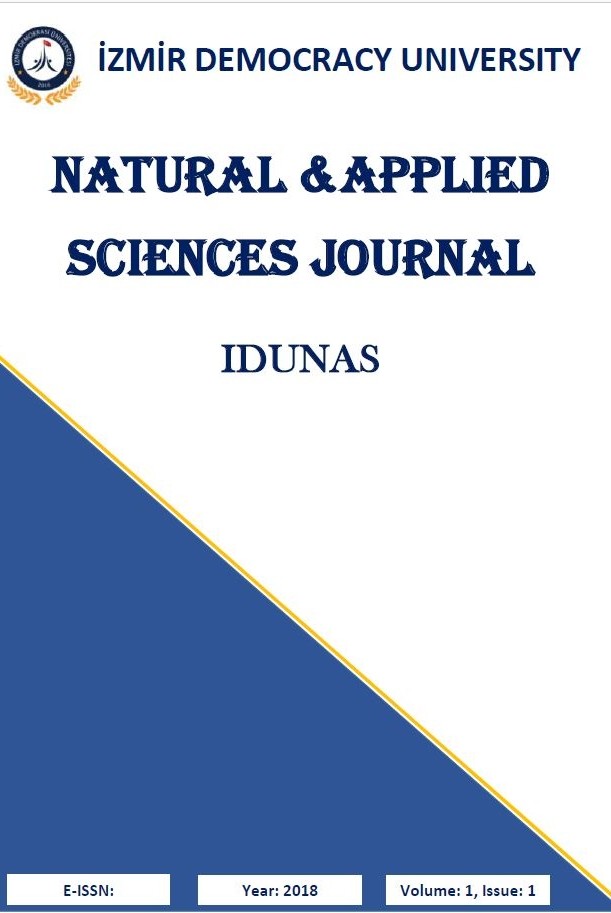Synthesis and Characterization of Metal Carbonyls [M(CO)6 (M= Cr, Mo,W), Re(CO)5Br] with Indole -3-carboxyaldehydemethanesulfonylhydrazone
Sulfonylhydrazones, Metal Carbonyls
Synthesis and Characterization of Metal Carbonyls [M(CO)6(M = Cr,Mo,W)] with Indole -3-carboxyaldehydemethanesulfonylhydrazone
Metal Carbonyls Sulfonylhydrazones, Photochemical Reactions,
___
- S.Özçelik, M.Dinçer, M.Şekerci, A.Balaban, Ü.Özdemir, Acta Crystallogr Sect.E 60:1552-1553(2004).
- H.Alyar, S.Alyar, A.Ünal, N.Özbek, N.Karacan, J.Mol.Struct 1028:116-125(2012)
- H.Alyar, A.Ünal, N.Özbek, S.Alyar, N.Karacan, Spectrochim Acta A 98:329-336(2012).
- N.I.Dodoff, Ü.Özdemir, N.Karacan, M.Georgieva, S.M.Konstantinov, M.E.Stefanova, Z.Naturforsch, 54:1553-1562(1999).
- Ü.Özdemir, F.Arslan, F.Hamurcu, Spectrochim Acta A 75: 121-126(2010).
- S.W.Kirtley, In Comprehensive Organometallic Chemistry, G.Wilkinson, F.G.A.Stone, E.W.Abel(Eds), p. 1079, Pergamon Press, Oxford (1982).
- A.S.Cavallo, G.Solladie, E.Tsano, J. Organomet. Chem., 144, 181(1978).[7]R.Lal De, K.Samanta (nee Bera), I. Banerjee, Indian J. Chem., 40A,144(2001).
- W. Kaim, S.Kohlmann, Inorg. Chem., 26, 68(1987). [9]B.M.Trost, M.Lautens, J. Am .Chem. Soc.,104, 5543 (1982); 105, 3343 (1982).
- B.J.Brisdon, D.W.Brown, C.R.Wills, Polyhedron, 5, 439(1986).
- A.B.Gündüzalp, Ü.Ö.Özmen, B.S.Çevrimli, S.Mamaş, S.Çete, Med. Chem. Res. 23:3255-3268(2014).
- F.Sarıkahya, O.S.Şentürk, Synth. React. Inorg. Met.-Org. Chem., 31, 1843(2001).
- F.A.Cotton, G.Wilkinson, Advanced Inorganic Chemistry, 5th Ed.1047(1988).
- J.E.Kovacic, Spectrochim.Acta 23A,183(1967).[15]G.L.Mieddler, D.A.Tarr, Inorganic Chemistry, 2nd Ed.,471(2000).
- ISSN: 2645-9000
- Başlangıç: 2018
- Yayıncı: İzmir Demokrasi Üniversitesi
Comparison Of Physical And Physiological Parameters Of Children Skier And Volleyball Players
Hiperspektral Görüntüleme ile Kırmızı Kan Hücresi Analizi
Hüseyin KURTULDU, Aynur Didem OKTAN, Hatice CANDAN, Beste Sahra CİHANGİROĞLU
Sabit Manyetik Alanların Programlanabilir Şantlar Üzerine Etkisi
Hüseyin KURTULDU, Büşra ÖZGEDE
